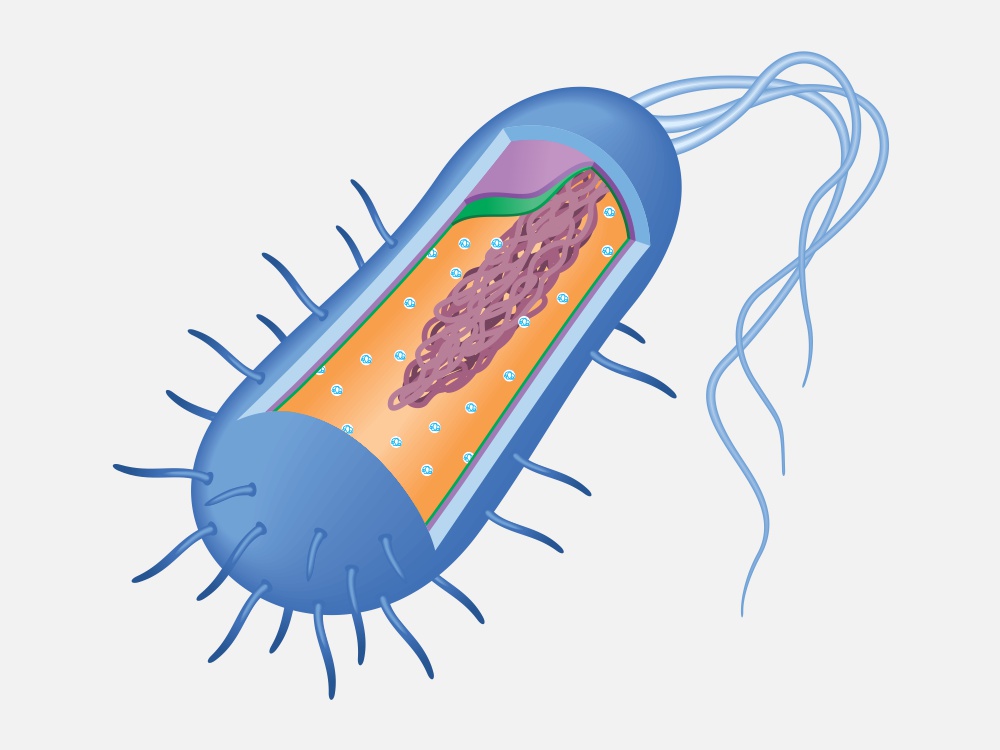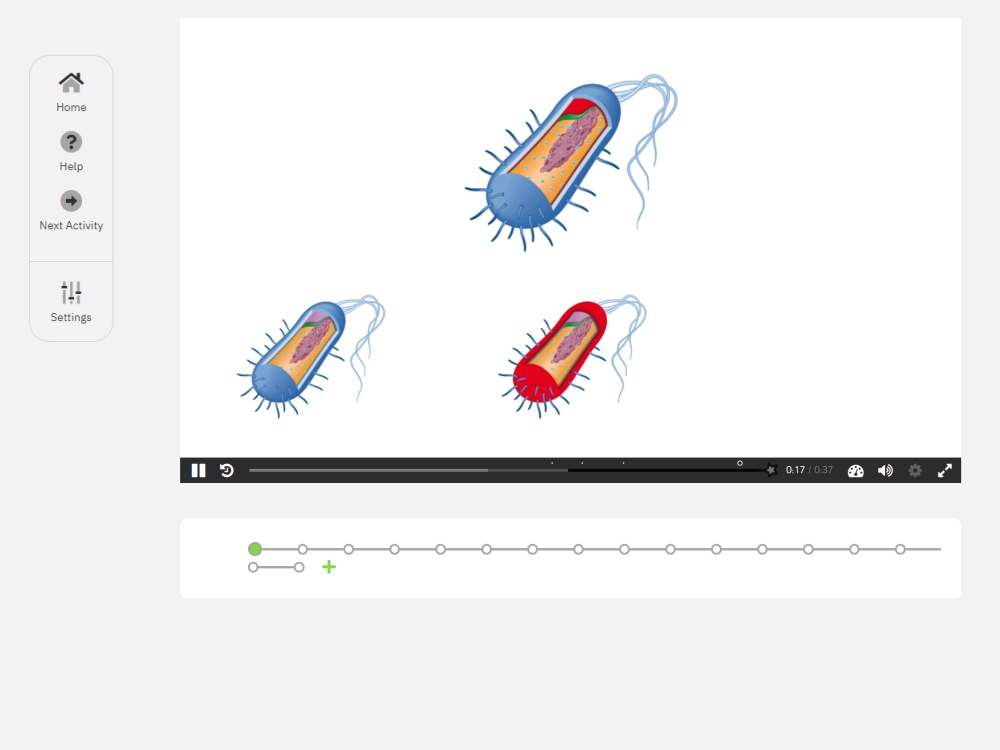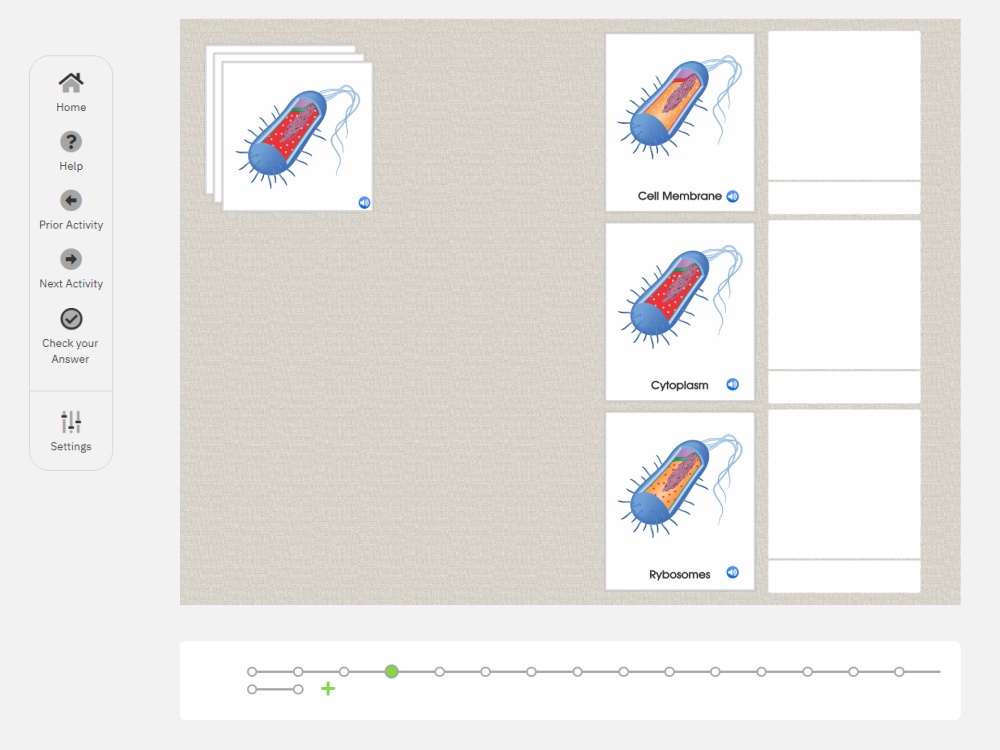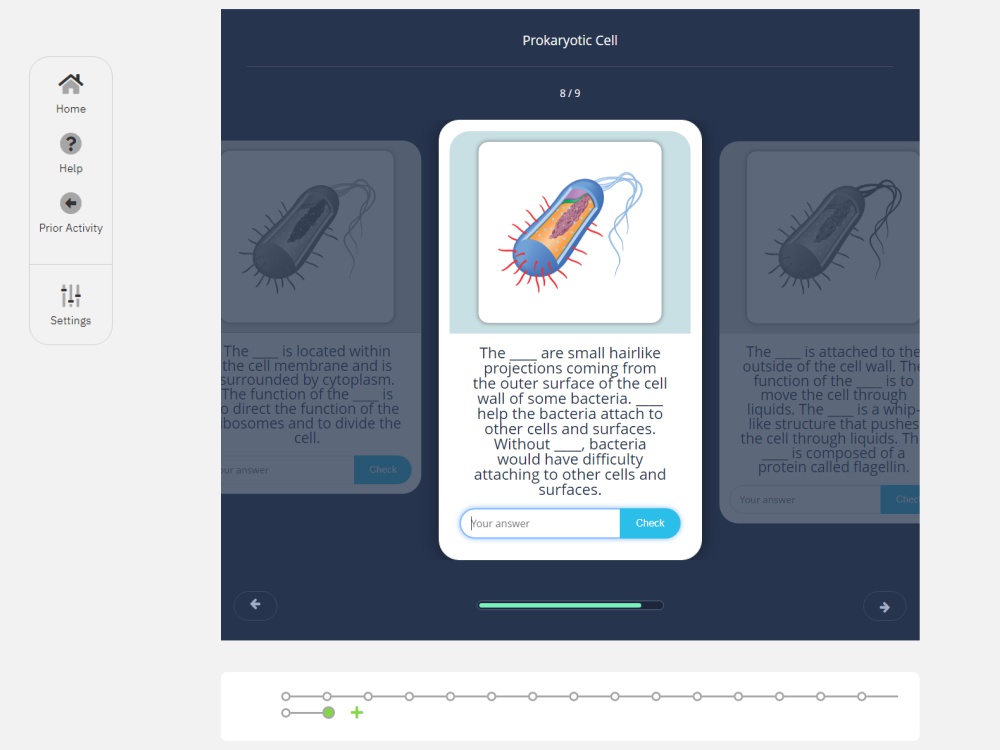Description
This material supports the Montessori biology curriculum. The cell of a living organism is the smallest part of the organism that carries on life processes for the organism and that gives structure to the organism. There are two kinds of cells: prokaryotic cells and eukaryotic cells. The prokaryotic cell does not have the center of the cell (nucleoid) separated from the rest of the cell by a membrane. The organisms that have the prokaryotic cell are all the bacteria. This material consists of 51 three-part cards, two booklets, and two wallcharts. The three-part nomenclature cards introduce children to the various characteristics and functions of a prokaryotic cell. The parts described are: capsule, cell wall, cell membrane, cytoplasm, ribosomes, nucleoid, flagellum, and pili. The nomenclature cards contain a description, a label, and a picture card for matching purposes. The two wallcharts represent all the parts together. The booklets serve as control for error for the nomenclature matching work.
Contents
Interactive Video Lessons
Digital Three-Part Cards
Digital Booklet
Parts represented:
prokaryotic cell
capsule
cell wall
cell membrane
cytoplasm
ribosomes
nucleoid
flagellum
pili
Skills
-develops an understanding of scientific occurrence at a cellular level
-enriches vocabulary pertaining to biology
-enhances classification skills, a necessary science component
-promotes concentration
Prior Knowledge Recommended
Botany Nomenclature Cards
Impressionistic Charts Botany
Zoology Nomenclature Cards
Main Characteristics of the Vertebrates
The Five Kingdoms Charts
The Plant Kingdom Charts
The Animal Kingdom Charts
The Fungus Kingdom Charts
Recommended Age
9-12
Subjects
Prokaryotic Cell





